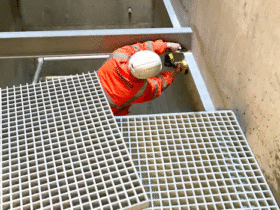The architectural industry has witnessed significant growth due to urbanisation and infrastructure development. Contemporary architecture is different from traditional styles. Bold and non-conventional forms are some characteristics of the latest constructions. Most architects have started adopting sustainable building practices. Let us provide a brief guide to designing a contemporary-style architecture in Australia.
Are contemporary and modern architectures the same?
‘Contemporary’ and ‘modern’ appear to be the same terms that describe interior design and architecture. However, from a technical perspective, they represent different architectural styles. The 20th century architectural style shows modernism, as it involves minimalism and clean lines in the overall design. Open floor layouts and asymmetry are common to contemporary architecture in Australia.
What are the characteristics of contemporary architecture?
The best contemporary architect accesses innovative materials and methods. The construction projects are not about designing linear forms. For instance, professional architects rely on 3D printing technology to design more challenging and precise forms. Moreover, 3D renderings portray a construction in a photorealistic detail.
Some common features of contemporary-style architecture are:
Simple geometry
Contemporary homes and even commercial architecture have a non-fussy, clean design. You will not find highly decorative trim and intricate exterior details. However, professional architects use unique materials and maintain simplicity to develop a tranquil atmosphere. They create curved facades to prevent visual monotony.
Airy and bright interiors
Most contemporary buildings have panoramic views and several openings. The windows are large and are positioned in a way that allows natural light to pass. The strategic placement of windows also helps with solar heating on winter days. The architects and other experts will focus on the sunrise and sunset directions while installing solar panels. Residents in contemporary buildings use external spaces for recreational activities.
Unconventional material usage
Contemporary architects recommend using unconventional materials to construct the building. For instance, they use metal and concrete to build residential and commercial buildings. Exposed bricks are also used in some domestic spaces. Minimalism in these constructions adds coolness or warmth to the space.
Flat roofing system
An overhanging flat roof is not a mere visual choice. This roofing structure has a functional value because it provides shade and protects the building from weather elements. A roof with an overhanging design extends the main architecture but creates a cohesive look.
Animation in architecture
Animated architecture is another characteristic of contemporary architecture. For instance, many high-end buildings have advanced lighting. Moreover, projections on facades often interact with passers-by and residents in the building. Even water elements are incorporated in unique styles, such as a distinctive fountain type and colourful jets of water. The overall buildings will feel more alive because of these animations.
Conclusion
Contemporary architecture reflects evolving values and technologies. From the open floor layout to eco-friendly materials, there are several aspects of an innovatively designed building. You can look for the best architects in Australia to invest in an elegant building construction project.












Leave a Reply